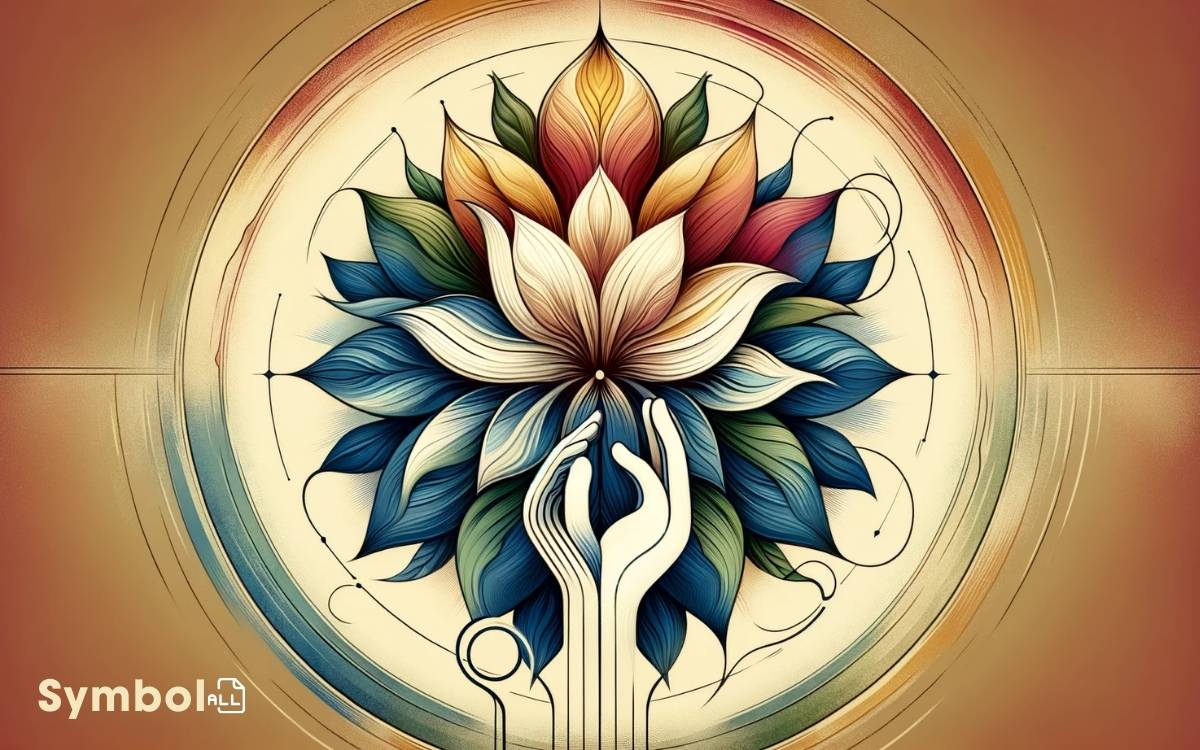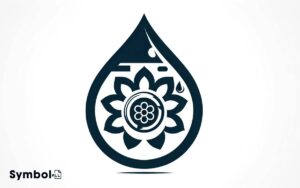Flower Which Is a Symbol of Healing: Lavender!
Lavender, cultivated for over 2,500 years, is your go-to symbol for healing. Its unique chemical profile, rich in linalool and linalyl acetate, underpins its medicinal prowess.
Unlike other flowers, lavender stands out for its potent antimicrobial and calming effects, essential in ancient rituals and healing practices.
It’s not just historical reverence; scientific analysis confirms lavender oil’s ability to reduce anxiety, enhance sleep quality, and soothe physical pains, thanks to its interaction with the brain’s receptors.
Lavender in your daily life isn’t merely therapeutic; it’s a historical bridge to natural wellness. Learning about its cultivation and varied applications can transform your approach to health.

Key Takeaways
The History of Lavender
Lavender, often associated with purity and tranquility, has been cultivated for over 2,500 years, serving a multitude of purposes ranging from medicinal to aromatic across various cultures.
You’ll find it fascinating that its origins trace back to the Old World, spanning Europe, Africa, and Asia. Scientifically known as Lavandula, this genus comprises approximately 47 known species, each adapted to specific climates and geographical conditions.
Through selective breeding and natural adaptation, these plants have developed unique chemical profiles, which contribute to their diverse uses.
Lavender‘s essential oil, rich in linalool and linalyl acetate, has been extensively studied for its potential to alleviate anxiety, promote sleep, and possess antimicrobial properties.
This underscores lavender’s enduring appeal, not just for its aesthetic but also for its therapeutic benefits, highlighting an intersection between nature’s beauty and its utility.
Lavender in Ancient Cultures
You’ll find that ancient cultures extensively utilized lavender for its ritualistic and medicinal properties. They recognized its potent antimicrobial and calming effects, incorporating it into daily life and ceremonial practices.
This understanding highlights lavender’s enduring significance across civilizations, underscoring its therapeutic and spiritual dimensions.
Lavenders Ritual Uses
Throughout history, various cultures have harnessed the ritualistic powers of lavender, attributing to it properties that range from purifying to healing.
Ancient Egyptians utilized lavender in mummification processes, believing its fragrance not only purified the body but also guided souls to the afterlife.
The Romans, on the other hand, infused their bathwater with lavender oil, recognizing its cleansing attributes not just for the body, but for the spirit as well. This practice was thought to ward off evil spirits and cleanse one’s aura.
In medieval Europe, lavender was strewn across floors of homes and churches as a means to sanctify spaces and protect against illness.
These ritual uses, deeply embedded in cultural traditions, showcase lavender’s enduring symbolic significance as a purifier and protector across civilizations.
Medicinal Applications
Ancient cultures tapped into the medicinal properties of lavender, recognizing its efficacy in treating a range of ailments from insomnia to infections. You’ll find that these civilizations weren’t just guessing; they were onto something profound.
Lavender contains linalool and linalyl acetate, compounds that have been scientifically proven to possess anti-inflammatory and antimicrobial properties.
This explains why it was so valued for wound healing and as a disinfectant. Additionally, its calming scent acts directly on the central nervous system, offering relief from anxiety and promoting better sleep.
This isn’t just folklore; modern research corroborates these ancient practices, showcasing lavender’s potential in neurology and infectious disease treatment.
Your understanding of lavender’s healing powers is deepened by recognizing its historical significance and the scientific basis that supports its continued use today.
Medicinal Properties
Often, certain flowers possess unique compounds that can greatly aid in treating various health conditions, showcasing their medicinal properties.
For instance, chamomile contains flavonoids and terpenoids, which are renowned for their anti-inflammatory and antioxidant effects. This makes chamomile an effective remedy for digestive disturbances and insomnia.
Similarly, echinacea is hailed for its immune-boosting qualities, drawing from its high concentration of alkamides, which can stimulate the immune system. It’s particularly useful during cold and flu season.
Additionally, calendula flowers are packed with anti-inflammatory and antimicrobial agents, making them an excellent choice for wound healing and skin care.
Each flower’s bioactive compounds interact with the body’s systems in nuanced ways, offering natural, holistic approaches to health care.
Lavender and Aromatherapy
Lavender, widely recognized for its calming and sedative properties, plays a pivotal role in the practice of aromatherapy, leveraging its rich profile of linalool and linalyl acetate to alleviate stress and improve sleep quality.
When you breathe in the soothing aroma of lavender, you’re not just indulging in a pleasant scent; you’re participating in a scientifically-backed method of relaxation and healing.
Consider these benefits:
- Reduces anxiety and emotional stress
- Enhances sleep quality
- Offers natural pain relief
- Improves brain function
- Helps to heal burns and wounds
The compounds found in lavender oil, primarily linalool and linalyl acetate, interact with the brain to moderate your mood and cognitive functions, making it a potent, natural remedy for a multitude of mental and physical health concerns.
Growing Your Own Lavender
To effectively cultivate your own lavender, it’s important to understand the specific growing conditions this plant requires, including well-drained soil, ample sunlight, and minimal water.
Lavender thrives in alkaline soil with a pH between 6.7 and 7.3. Testing your soil’s pH and adjusting it with lime or sulfur guarantees the right environment for growth.
This plant demands at least six hours of direct sunlight daily; insufficient light leads to sparse blooms and weak fragrance.
Watering needs are moderate lavender prefers dry conditions over wet feet. Overwatering or poor drainage can cause root rot, a common issue.
Employing gravel or sand improves drainage, mirroring its native Mediterranean habitat. Mulching with materials like pea gravel instead of organic mulch reduces soil moisture, further promoting health and vigor in your lavender plants.
Harvesting and Using Lavender
Once your lavender reaches full bloom, typically in late June through August depending on your climate zone, it’s crucial to harvest the flowers at the right time for best fragrance and oil content.
To guarantee you’re utilizing lavender effectively:
- Harvest in the morning after dew has evaporated but before the sun is at its peak.
- Use sharp scissors to cut just above the leaves, promoting future growth.
- Dry by hanging bundles upside down in a dark, well-ventilated area.
- Store dried lavender in airtight containers away from direct sunlight.
- Extract oils through steam distillation for a potent, therapeutic product.
Understanding these steps ensures you’re maximizing the healing properties of lavender, harnessing its benefits for relaxation, pain relief, and antiseptic uses scientifically.
Lavender in Folklore and Myth
Throughout history, people have woven lavender into their folklore and myths, attributing to it powers of protection, purification, and love.
This connection isn’t merely coincidental; it’s rooted in the plant’s inherent chemical makeup, which has been observed to have various effects on the human body and mind.
Here’s a snapshot of how lavender has been perceived across different cultures:
| Culture | Belief |
|---|---|
| Roman | Used in baths for purification and to attract love. |
| European | Carried to ward off the evil eye and guarantee protection. |
| English | Planted in gardens to keep ghosts at bay. |
| French | Believed to bring good luck and used in love spells. |
Each of these beliefs, while mystical in nature, hints at the deep-seated human intuition about lavender’s soothing and restorative properties.
The Science Behind Lavenders Healing
You’ve likely heard of lavender’s calming scent, but it’s the plant’s aromatic compounds that actively reduce stress by impacting your central nervous system.
Studies show that these compounds can lower heart rate and blood pressure, enhancing overall relaxation.
Additionally, lavender’s antiseptic properties have been scientifically proven to fight bacteria and heal skin wounds more effectively.
Lavenders Aromatic Compounds
Lavender’s therapeutic effects stem from its rich blend of aromatic compounds, including linalool and linalyl acetate, which play pivotal roles in its healing properties.
These compounds aren’t just fragrant; they’re scientifically proven to impact health in various ways.
- Linalool: A naturally occurring terpene alcohol found in lavender oil, renowned for its calming and anti-inflammatory properties.
- Linalyl acetate: A terpene ester that contributes to lavender’s soothing aroma and is also thought to offer anti-inflammatory benefits.
- Camphor: Present in small amounts, it provides a cooling effect and enhances circulation.
- Cineole: Offers antiseptic properties, supporting the body’s natural healing process.
- Myrcene: A minor component that may contribute to the analgesic and anti-inflammatory effects of lavender.
Understanding these compounds deepens your appreciation for lavender’s healing potential beyond its calming scent.
Stress Reduction Impact
Delving deeper into lavender’s therapeutic arsenal reveals its remarkable efficacy in stress reduction, primarily attributed to its interaction with the central nervous system.
You’ll find its secret lies in the volatile oils and linalool, compounds that, when inhaled, can cross the blood-brain barrier.
This penetration allows them to directly influence brain activity, significantly reducing the activity of stress-inducing neurotransmitters while promoting a calming effect.
Scientific studies underscore lavender’s ability to lower cortisol levels, the stress hormone, thereby mitigating the physiological responses to stress. This includes decreased heart rate and blood pressure, fostering a state of relaxation.
Understanding this, you grasp why lavender isn’t just a fragrant bloom but a scientifically backed tool for reducing stress, offering a natural, accessible means to enhance your mental well-being.
Antiseptic Properties Explored
Beyond its stress-reducing properties, lavender also boasts significant antiseptic qualities, a confirmation of its diverse therapeutic potential.
When you explore into the science, you’ll find that lavender oil is rich in compounds that contribute to its antiseptic prowess:
- Linalool: Exhibits antimicrobial activity against a wide range of bacteria and fungi.
- Limonene: Acts as a natural disinfectant.
- Geraniol: Offers potent antiviral effects.
- Cineole: Has been shown to kill respiratory pathogens.
- Camphor: Provides a cooling effect that can soothe irritated skin, further preventing infection.
These components work synergistically, making lavender not just a soothing scent but a powerful ally in preventing and fighting off infections. It’s a fascinating blend of nature’s simplicity and complexity, offering you a natural, holistic approach to health.
Incorporating Lavender Into Daily Life
Incorporating lavender into your daily routine can greatly enhance mental well-being and alleviate stress, thanks to its proven calming and therapeutic properties.
Lavender’s efficacy stems from its active compounds, particularly linalool and linalyl acetate, which have been shown to interact with the central nervous system to induce relaxation.
By adding a few drops of lavender essential oil to your bath or diffuser, you’re not just inviting a pleasant aroma into your space; you’re also engaging in a form of aromatherapy that can lower anxiety levels and improve sleep quality.
For a more direct approach, applying diluted lavender oil to your temples or wrists can provide immediate stress relief.
It’s important, however, to make sure the lavender oil you use is of therapeutic grade for maximum benefit.
Conclusion
In wrapping up, it’s clear that lavender isn’t just a beautiful flower; it embodies profound healing capacities backed by science.
Delving into its history and folklore enriches our understanding, while modern research confirms its therapeutic benefits, especially in aromatherapy. Growing and incorporating lavender into your daily life can be a rewarding journey towards natural wellness.
So, as you sprinkle lavender into your routine, remember, you’re harnessing a plant with centuries of healing wisdom, validated by today’s scientific scrutiny.






